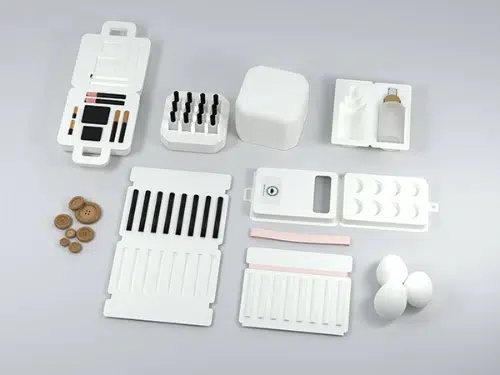Making the Switch to Eco Friendly Packaging Solutions
The global packaging landscape is undergoing a fundamental transformation as businesses across industries recognize the urgent need to reduce plastic waste. With consumers increasingly demanding sustainable options and governments implementing stricter environmental regulations, companies can no longer afford to rely on traditional plastic packaging. This shift presents both challenges and opportunities—while the transition requires careful planning and investment, it also offers businesses the chance to enhance their brand image, reduce costs, and contribute to environmental conservation. The following guide provides a comprehensive roadmap for navigating this important transition successfully.
Understanding the Need for Change
The environmental impact of plastic packaging has become impossible to ignore. Recent statistics paint a concerning picture: Each EU resident generated approximately 188.7 kg of packaging waste in 2021, with 46% ending up in landfills and 22% being poorly managed. These numbers highlight the pressing need for systemic change in how we package products. Beyond environmental concerns, consumer preferences have shifted dramatically—studies show that 90% of shoppers are influenced by sustainable packaging choices when making purchasing decisions. Metal packaging, in particular, has gained recognition for its sustainability credentials.
The benefits of transitioning to eco-friendly packaging extend beyond environmental impact. Businesses adopting sustainable solutions often experience improved production efficiency and reduced costs in the long term. Packaging modifications alone can lead to a 30% decrease in scope 3 emissions, while embracing reusable packaging systems could cut greenhouse gas emissions by an impressive 69%. These compelling figures make a strong business case for companies considering the switch from conventional plastic packaging.
Evaluating Material Alternatives
The market now offers diverse sustainable packaging materials, each with unique characteristics. Cardboard packaging has gained popularity among environmentally conscious consumers, particularly younger demographics, due to its recyclability and renewable nature. Metal options like tin and aluminum provide durability and excellent protection while being infinitely recyclable. For businesses seeking fully biodegradable solutions, compostable biomaterials derived from plant sources offer an attractive alternative to traditional plastics.
When selecting materials, companies must consider their specific product requirements. Water-based cosmetic products, for instance, need water-resistant liners to prevent leaks during transit. High-end products might benefit from tinplate packaging, which combines aesthetic appeal with the strength of steel. The key is matching material properties with product needs—considering factors like size, durability, appearance, and accessibility—to ensure both functionality and sustainability.
| Material | Advantages | Considerations |
|---|---|---|
| Cardboard | Highly recyclable, renewable, cost-effective | Limited moisture resistance, may require coatings |
| Metal (Tin/Aluminum) | Infinite recyclability, excellent protection, premium appearance | Higher material cost, weight considerations |
| Compostable Biomaterials | Fully biodegradable, plant-based, sustainable | Requires specific composting conditions, limited shelf life |
Designing for Sustainability and Appeal
Packaging serves as a powerful communication tool between brands and consumers. A transition to sustainable materials presents an opportunity to rethink design strategies and create packaging that not only protects products but also tells a compelling brand story. Metal packaging, for example, offers distinctive visual appeal that can make products stand out on crowded retail shelves. The tactile experience of opening a well-designed tin or aluminum container can create memorable brand interactions that foster customer loyalty.
Innovative design doesn't necessarily mean starting from scratch—many sustainable luxury packaging solutions can be adapted from existing designs. Whether choosing custom or off-the-shelf options, the key is selecting packaging that aligns with both sustainability goals and brand identity. Effective sustainable packaging design should consider the entire product lifecycle, from manufacturing to disposal, ensuring minimal environmental impact at every stage.
Implementing the Transition
The final steps in transitioning to sustainable packaging involve careful supplier selection and consumer education. Finding reliable suppliers who can deliver high-quality sustainable materials with consistent turnaround times is crucial. Businesses should thoroughly vet potential partners, examining their sustainability claims and production capabilities to avoid greenwashing and ensure alignment with environmental objectives.
Communicating the Change to Customers
Consumer education represents a critical component of successful packaging transitions. Even positive changes can initially confuse or concern customers accustomed to a product's traditional appearance. Proactive communication about the benefits of new packaging—through marketing campaigns, product labeling, and digital content—can transform potential resistance into brand loyalty. Highlighting environmental benefits while assuring customers about maintained product quality helps build trust and acceptance of the new packaging.
The journey from plastic to sustainable packaging may seem daunting, but with proper planning and execution, businesses can achieve both environmental and commercial benefits. By following these strategic steps—understanding the need for change, evaluating alternatives, designing thoughtfully, implementing carefully, and communicating effectively—companies can position themselves as leaders in sustainability while meeting evolving consumer expectations. The transition represents not just an obligation, but an opportunity to redefine brand values and connect with environmentally conscious consumers in meaningful ways.

